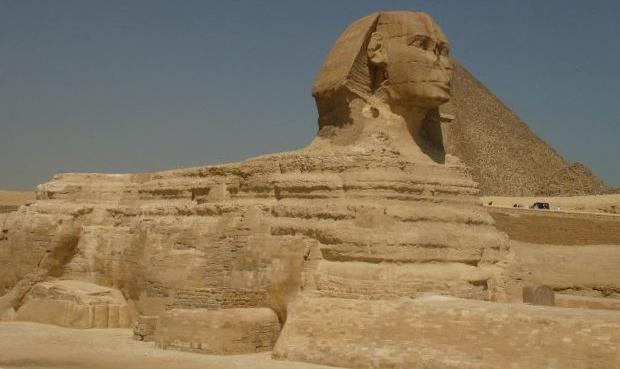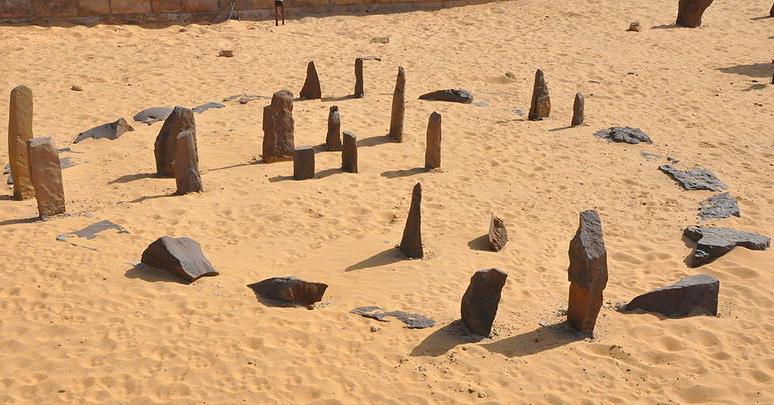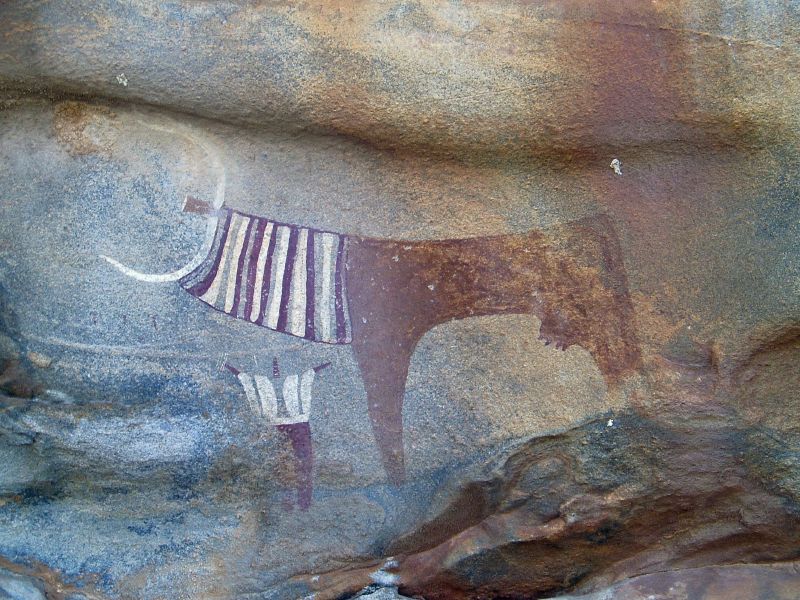Africa's Cultural Age (20,000 - 5000 BC)
As early as 13,700 BC, Africans practiced cultural traditions. Examples include the many
ceremonial burials at Jebel Sahaba and Wadi Halfa in the northern part of modern-day Sudan (known to archaeologists as the "Qadan" period (13,000-8,000 BC)).
At the Toshka site in modern-day "Lower Nubia," archaeologists have
uncovered tombs where domesticated wild cattle were placed above human remains,
an early example of the use of animals in a ceremonial or cultural manner.
This area is home to the oldest known tombs in the world, including the circular (or ovular), subterranean
tomb walls covered with above-ground mounds. The buried bodies were lain in the fetal position similar to later customs found in "predynastic Egypt."
Other burial sites in the region show further examples of the beginnings of culture and tradition. At the
Kadruka cemetery, spouted vessels were found and the tombs at El Gaba were filled with jewelry, pottery, ostrich feathers,
headrests, facial painting, etc.--all cherished items in "dynastic Egypt" and still used today in interior Africa. The neolithic Sabu rock paintings even depict dynastic Egyptian-style boats.
Horemaket, courtesy of Nina Aldin Thune
 |
Africans combined their new cultural practices with their centuries worth of calculations and observations to form the foundations
of astronomy and astrology, for that matter. By 10,000 BC, Africans had calculated
great astronomical cycles and built the first known monument near the exact center of the world--perfect for astronomical observations and more precise
calculations. Even more important, Horemaket (also known as the "Great Sphinx of Giza") was
carved around 10,000 BC with its lion's body and human head facing directly at the rising sun in the "Leo" zodiac--
an example of the merge of science and culture.
Nabta Playa Calendar, courtesy of Raymbetz
 |
Some 400 miles southwest of Horemaket, lies Nabta Playa, which had been settled over 10,000 years ago. At the site is a
stone calendar which would have aligned with Orion's Belt, as well as evidence of agriculture, use of pottery,
and construction of stone structures. Also discovered at the site were sacrificed cattle buried in stone constructs from 6,000 BC, suggesting
early ceremonial practices and a clear link to the "dynastic Egyptian" worship
of Hathor, the cow deity of fertility..
Laas Geel painting, courtesy of Flickr user, Najeeb.
 |
Discovered by Europeans only in 2002, the Laas Geel (Laas Gaal) cave paintings in Somaliland, Somalia date as far back as
9,000 BC. This large collection of paintings are very well preserved, featuring colorful depictions of animal and plant
life, some of which may be extinct, as well as scenes from several historical events in the
region. What's interesting about the particular painting to the right is the human interaction
with the cow. Although unclear, it appears the cow has some type of
clothing on his head, and based on the human's position in relation to the cow, it suggests
a ceremonial or cultural ritual is taking place. Moreover it could serve as yet another link with the early worship of
the cow deity of fertility (and domestication of cattle) throughout Africa.
The British Museum houses a huge collection (some 14,000 fragments) of African pottery believed to have been created around 8,000 BC. Found at the ancient
city of Kerma in north-central Sudan.
Read more.
Continue >>


